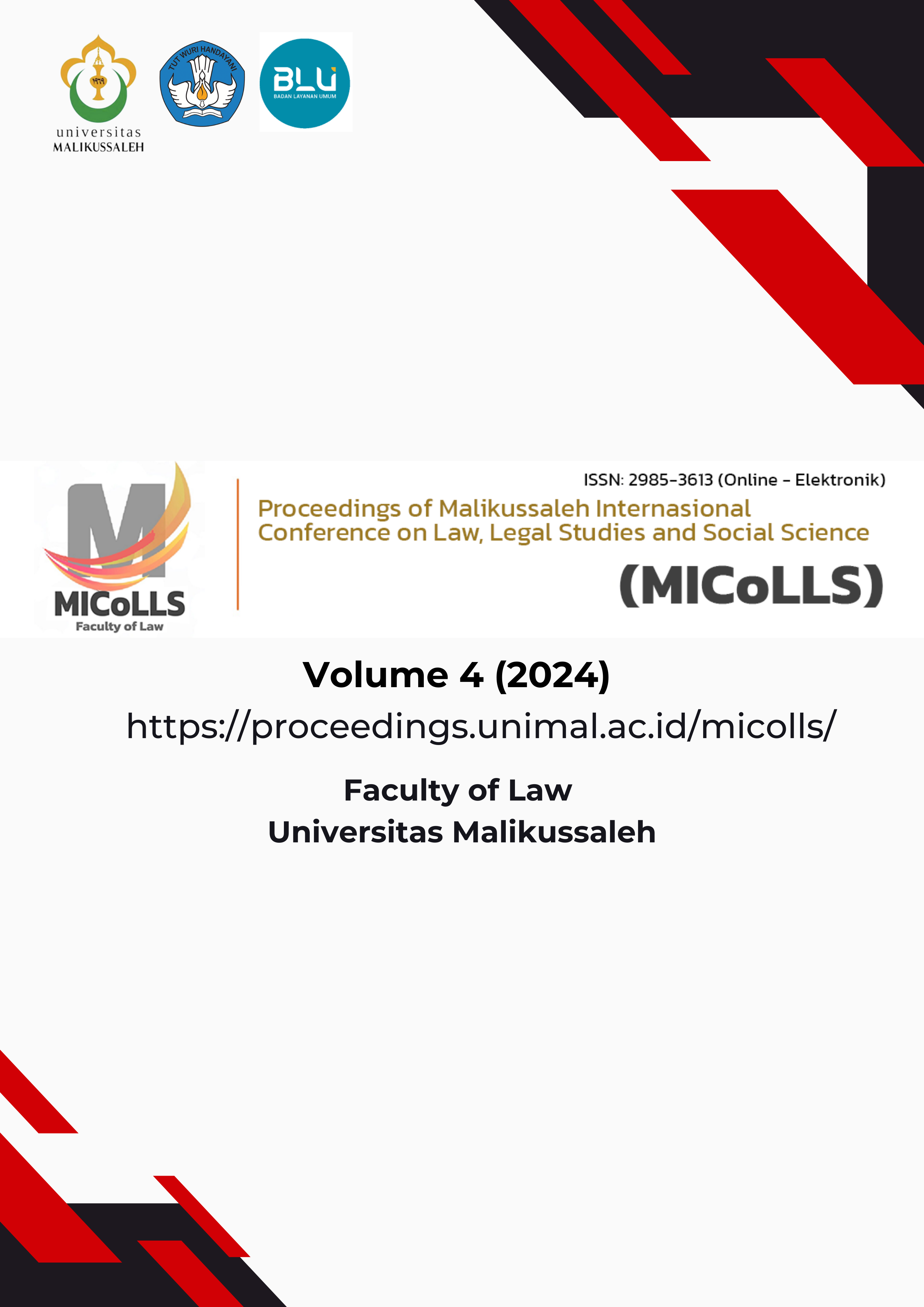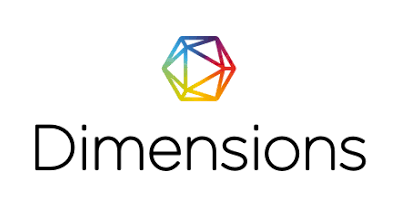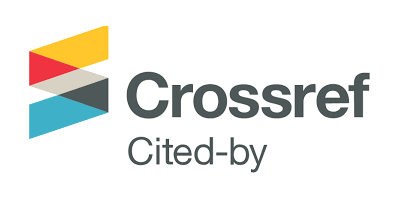The Influence Of Ambidextrous Leadership, Inter-Agency Relationship Management, and Information Technology Adoption In Strategic Alliances To Improve Organizational Performance Of Bakamla RI (A Case Study In The Malacca Strait)
Keywords:
Ambidex, Leadership, Bakamla RI, Malacca StraitAbstract
The performance of Bakamla’s national patrol strategic alliances directly influences ambidextrous leadership, inter-agency relationships, information technology adoption, and government policy. The leadership issues at Bakamla are ambidextrous in nature because Bakamla serves as a coordinating agency that constantly faces paradoxical situations when dealing with stakeholders, each with their own sectoral interests. Bakamla has faced constant criticism regarding the lack of improvement in organizational performance. Bakamla must urgently improve itself, considering its relatively young age, and it is necessary to implement managerial reforms to enhance its performance. This is increasingly urgent as the potential for crime and maritime violations grows due to both the misuse of technological advancements and geopolitical dynamics in Southeast Asia. The research conducted is a combination of quantitative and qualitative methods, which are valuable tools for testing theories, presenting facts, explaining statistics, demonstrating relationships among variables, and developing concepts, understandings, interviews, and other elements. Qualitative data from respondents within Bakamla indicate that the Organizational Performance is significantly influenced by government policy, ambidextrous leadership, inter-agency relations, technology adoption, and strategic alliances, even exceeding the achievement targets communicated by the Head of the Indonesian Maritime Security Agency (Bakamla), Rear Admiral TNI Irvansyah, who stated that the performance allowance received by the agency ranged from a minimum of 47%. This success is attributed to Bakamla's programs of Monitoring, Controlling, and Surveillance.
References
Abdelaliem, S. M., & Zeid, M. A. G. (2023). The relationship between toxic leadership and organizational performance: the mediating effect of nurses’ silence. BMC nursing, 22(1), 4.
Ambari, M. (2021). Waspada kapal ikan asing karena musim terbaik di Laut Natuna Utara masih terus berlangsung. Mongabay. https://www.mongabay.co.id/2021/05/27/waspadai-kapal-ikan-asing-musim-terbaik-laut-natuna-utara-masih-terus-berlangsung/
Annisa, G. M., & Martin, R. S. (2022). Strategi Pengawasan BAKAMLA Zona Maritim Barat dalam Pengamanan dan Keselamatan di Wilayah Perairan Kota Batam. Social Issues Quarterly, 1(1), 58-74.
Arif, M., & Kurniawan, Y. (2018). Strategic culture and Indonesian maritime security: strategic culture and Indonesian maritime security. Asia & the Pacific Policy Studies, 5(1), 77–89. https://doi.org/10.1002/app5.203
Carugati, A., Mola, L., Plé, L., Lauwers, M., & Giangreco, A. (2020). Exploitation and exploration of IT in times of pandemic: from dealing with emergency to institutionalising crisis practices. European Journal of Information Systems, 29(6), 762–777. https://doi.org/10.1080/0960085X.2020.1832868
Castañer, X., & Oliveira, N. (2020). Collaboration, coordination, and cooperation among organizations: establishing the distinctive meanings of these terms through a systematic literature review. Journal of Management, 46(6), 965–1001. https://doi.org/10.1177/0149206320901565
Chou, S.-W. (2021). Understanding crowdsourcing adoption based on IT managers’ decision. Information Technology and Management, 22(4), 245–263. https://doi.org/10.1007/s10799-021-00334-8
Chowdhury, S., Budhwar, P., Dey, P. K., Joel-Edgar, S., & Abadie, A. (2022). AI-employee collaboration and business performance: integrating knowledge-based view, socio-technical systems and organisational socialisation framework. Journal of Business Research, 144, 31–49. https://doi.org/10.1016/j.jbusres.2022.01.069
Duman, M. C., & Akdemir, B. (2021). A study to determine the effects of industry 4.0 technology components on organizational performance. Technological forecasting and social change, 167, 120615.
Frogeri, R. F., Portugal Júnior, P. D. S., Piurcosky, F. P., Sanacato, V., Calle, J. L. D., Gazzola, S. B., & Oliveira, F. F. D. (2022). Dynamic ambidexterity: proposal of a theoretical and hypothetical model. Revista de Administração Contemporânea, 26, e210088.
Ghozali, I. (2016). Desain penelitian kuantitatif dan kualitatif: untuk akuntansi, bisnis, dan ilmu sosial lainnya.
Hardinata, M. F., Halawa, E. C., & Situmeang, P. R. (2023). Evaluasi pengawasan Bakamla terhadap illegal fishing di Natuna. Comte: Jurnal Sosial Politik dan Humaniora, 1(1), 89–101.
Inthavong, P., Rehman, K. U., Masood, K., Shaukat, Z., Hnydiuk-Stefan, A., & Ray, S. (2023). Impact of organizational learning on sustainable firm performance: intervening effect of organizational networking and innovation. Heliyon, 9(5), e16177. https://doi.org/10.1016/j.heliyon.2023.e16177
Jensen, J. M. W, & Thunberg, S. (2024). Navigating professionals’ conditions for co-production of victim support: a conceptual article. International Review of Victimology, 30(2), 401-416. https://doi.org/10.1177/02697580231174913
Katou, A. A., Kafetzopoulos, D., & Vayona, A. (2023). Investigating the serially mediating mechanisms of organizational ambidexterity and the circular economy in the relationship between ambidextrous leadership and sustainability performance. Sustainability, 15(10), 7937. https://doi.org/10.3390/su15107937
Katou, A. A., Kafetzopoulos, D., & Vayona, A. (2023). Investigating the serially mediating mechanisms of organizational ambidexterity and the circular economy in the relationship between ambidextrous leadership and sustainability performance. Sustainability, 15(10), 7937. https://doi.org/10.3390/su15107937
Krejcie, R. V., & Morgan, D. W. (1970). Determining sample size for research activities. Educational and Psychological Measurement, 30(3), 607–610. https://doi.org/10.1177/001316447003000308
Kusuma, A. W., Prakoso, L. Y., & Sianturi, D. (2021). Sinergitas Komando Armada I dan Badan Keamanan Laut Republik Indonesia dalam Strategi Pertahanan Laut Guna Memberantas Kejahatan Lintas Negara di Selat Malaka. Jurnal Strategi Pertahanan Laut, 5(2).
Oluwafemi, T. B., Mitchelmore, S., & Nikolopoulos, K. (2020). Leading innovation: empirical evidence for ambidextrous leadership from UK high-tech SMEs. Journal of Business Research, 119, 195–208. https://doi.org/10.1016/j.jbusres.2019.10.035
Pereira, F.V, Tavares, J., & Oliveira, T. (2023). Adoption of video consultations during the COVID-19 pandemic. Internet Interventions, 31, 100602. https://doi.org/10.1016/j.invent.2023.100602
Reiners, N. (2020). Opposites attract? The World Bank and the United Nations human rights bodies. In T. Hickmann & M. Lederer (Eds.), Leidenschaft und augenmaß (pp. 99–108). Nomos Verlagsgesellschaft mbH & Co. KG. https://doi.org/10.5771/9783845294292-99
Smith, S. M., & Butler, S. (2021). Maintaining the fight for equality through and beyond COVID-19: a focus on the build back better report and ambidextrous leadership. Strategic HR Review, 20(1), 17-22
Sugiarto, P., & Suryanto, Y. (2022). Evaluation of the readiness level of information system security at the BAKAMLA Using the KAMI Index based on ISO 27001:2013. International Journal of Mechanical Engineering, 7(2), 3607-3614.
Sugiyono (2022). Metode penelitian kuantitatif. Bandung: alfabeta.
Sulistyaningtyas, T. (2016). Sinergitas Paradigma Lintas Sektor Keamanan di Bidang Keamanan. Gramedia Pustaka Utama.
Sutisna, M., & Rofii, M. S. (2022). Intelijen Strategis BAKAMLA RI dalam Melaksanakan Kolaborasi Institusi Keamanan Maritim untuk Ketahanan Nasional. Jurnal Kajian Stratejik Ketahanan Nasional, 5(1), 1.
Yang, M., Al Mamun, A., & Salameh, A. A. (2023). Leadership, capability and performance: a study among private higher education institutions in Indonesia. Heliyon, 9(1), e13026. https://doi.org/10.1016/j.heliyon.2023.e13026
Yu, M., Wen, J., Smith, S. M., & Stokes, P. (2022). Building-up resilience and being effective leaders in the workplace: a systematic review and synthesis model. Leadership & Organization Development Journal, 43(7), 1098-1117.
Downloads
Published
Issue
Section
License
Copyright (c) 2025 Ade Prasetia

This work is licensed under a Creative Commons Attribution-ShareAlike 4.0 International License.
Authors retain the copyright and grant the proceeding the right of first publication. This work is licensed under a Creative Commons Attribution-ShareAlike 4.0 that allows others to share the work with an acknowledgement of the Creative Commons Attribution-ShareAlike 4.0 that allows others to share work with an acknowledgement of the works authorship and initial publication in this proceeding.
All articles in this proceeding may be disseminated by listing valid sources, and the article's title should not be omitted. The content of the article is liable to the author.
Authors are able to enter into separate, additional contractual arrangements for the non-exclusive distribution of the proceeding's published version of the work (e.g., post it to an institutional repository or publish it in a book), with an acknowledgement of its initial publication in this proceeding.
Authors are permitted and encouraged to post their work online (e.g., in institutional repositories or on their website) before and during the submission process, as it can lead to productive exchanges and earlier and greater citation of published work.
In the dissemination of articles, the author must declare the Proceedings of Malikussaleh International Conference on Law, Legal Studies and Social Science (MICoLLS) as the first party to publish the article.






